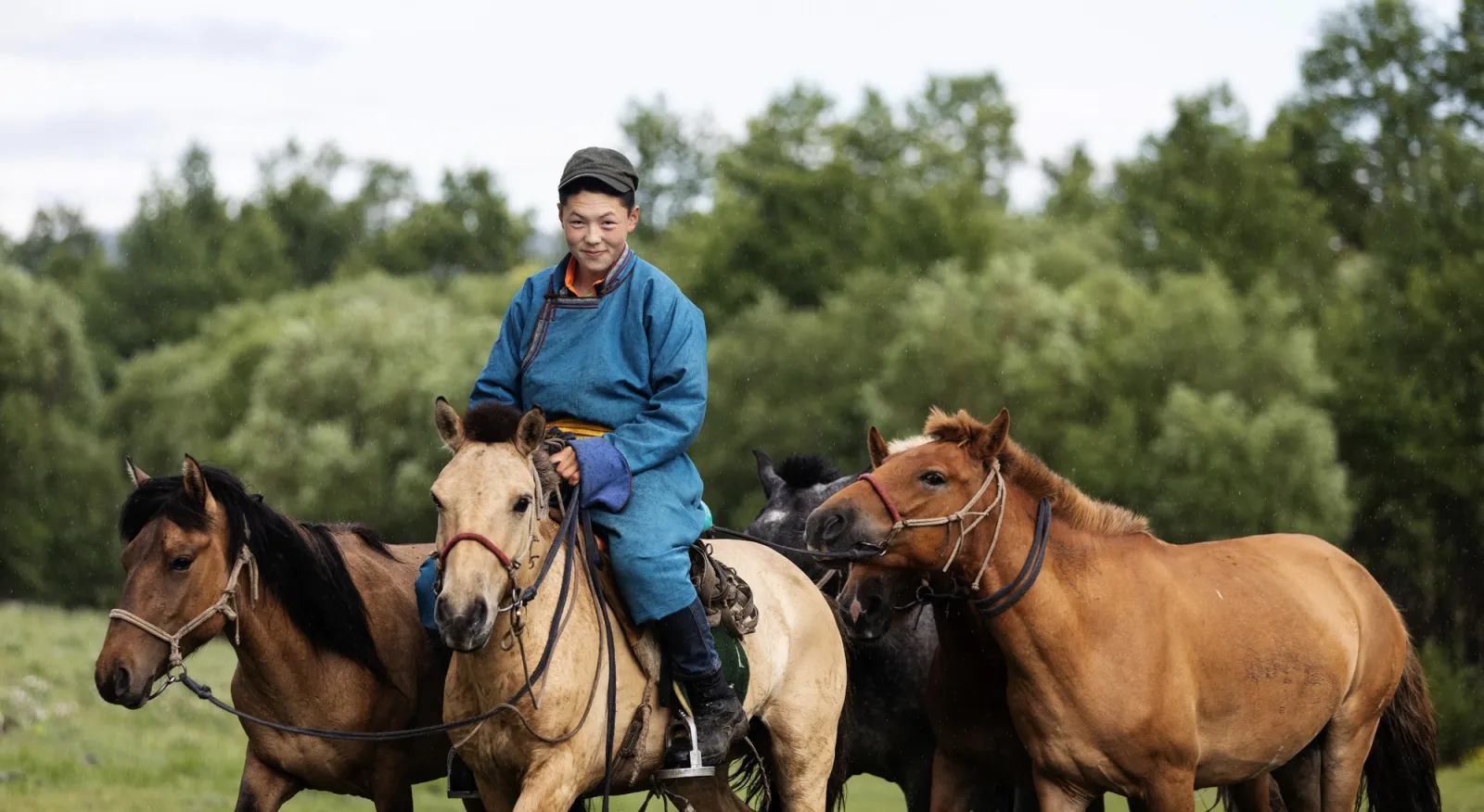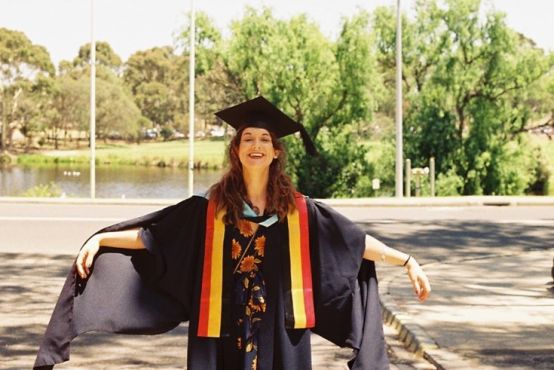
About Mongolia
Mongolia is the world’s second-largest landlocked country, positioned between China and Russia. Its population of 3.2 million people live across a large territory of 1.5 million square kilometres, making Mongolia the world’s most sparsely populated country. In the south of the country lies Asia’s largest desert, the Gobi. Mongolia's capital, Ulaanbaatar, is a cosmopolitan counterpoint to the vast landscapes of the rest of the country.
In ancient times, the region that is now Mongolia was home to various nomadic tribes who played a crucial role in the political landscape of Central Asia. Under the leadership of Genghis Khan in the 13th century Mongolia emerged as a dominant force, with the Mongol Empire stretching from Eastern Europe to Asia. After the collapse of the Mongol Empire, Mongolia experienced periods of fragmentation and foreign domination, including rule by China. In 1911 Mongolia declared independence from China and in 1921 established the Mongolian People's Republic, the world’s second socialist country. For the following 70 years Mongolia existed under a Soviet-dominated communist regime. The end of the Cold War brought about democratic reforms, and Mongolia transitioned into a multi-party democracy in 1990.
Mongolia’s steppe is home to one of the world’s last surviving nomadic cultures, and around one third of households live a nomadic or semi-nomadic life. The population is predominately ethnic Mongolian (94.9%), with Kazakh people (5%) and Turkic, Chinese and Russian people making up the remainder of the population.
Mongolia is one of the world’s fastest-growing economies, with a strong mining sector. While recent economic growth has helped the country reach lower-middle income status, Mongolia’s poverty rate remains relatively high, with just over one-in-four people still living in poverty. The economic model based heavily on mining and agriculture, combined with rapid urbanisation and mass domestic migration, has put considerable pressure on ecosystems.
Australian volunteers have supported a wide range of Mongolian partner organisations to achieve their development goals since 1998.
Learn more about the Australian Volunteer Program's work in Mongolia.
Key things to consider about volunteering in Mongolia
- Mongolia has an incredibly harsh climate. Ulaanbaatar is the world’s coldest capital city, and temperatures can range from extremes of -40°C in January to 30°C in July.
- Air pollution can pose a health risk to volunteers. Volunteers on assignment during winter months will be provided with face masks and air purifiers on arrival.
- Dietary requirements can be difficult to cater for. Both wheat and meat are popular in Mongolia, so gluten free and vegetarian diets are more difficult to cater to than in Australia.
- Strong youth and innovation culture. Young people make up almost 35 percent of the total population in Mongolia, which means that workplace culture is often creative and innovative, and colleagues open-minded. This encourages the opportunity to work innovatively.
Learn what it's like to volunteer in Mongolia
Indigenous Australian volunteer Victoria Langmead writes about volunteering remotely, and the surprising connections she has found between her culture, and that of her colleagues in Mongolia.
Learn more
Culture and religion
Mongolian culture is heavily influenced by the nomadic way of life. Nomads are primarily of Mongolic ethnicity and blend this nomadic tradition with modern influences. Mongolia's rich history as the birthplace of the Mongol Empire under Genghis Khan has left a lasting impact on their identity, marked by a proud warrior heritage. Despite harsh climates and geographical challenges, the Mongolian people exhibit a strong sense of national pride, and their traditional customs and celebrations continue to play a significant role. The traditional Mongolian garment called a deel is worn by elders and herders, in the cities, Mongolians wear deels on special occasions.
The felt tent called a ger is an integral part of the Mongolian national identity. A large share of Mongolia’s population continues to live gers, even on the outskirts of Ulaanbaatar.
Religion
In the Soviet era, there were restrictions on religious activity, however since the collapse of the Soviet Union, religion has made a comeback and monasteries have been rebuilt. Tibetan Buddhism was introduced to Mongolia in the 16th century, and Buddhism remains closely linked with the country’s cultural traditions. According to the 2010 national census, 53% of Mongolians identified as Buddhist, 38% atheist, 3% Muslim and 2% Christian.
Dress
Ulaanbaatar is a modern and fast-developing city, and foreigners are unlikely to attract any attention towards their clothing. However, when travelling in the countryside, women should wear conservative clothing.
Language
Mongolian is the official national language. As a product of its time as a Soviet satellite, Russian was the preferred second language for most Mongolians to learn until the early 2000s. The younger generation now prefers to learn English due to the influence of Western culture, with Korean and Japanese also popular for political and economic reasons.
In Ulaanbaatar, most people tend to understand basic English and will be able to point you to your destination when asked. When visiting the countryside, foreigners will need basic Mongolian to communicate.
The program provides funding to support language lessons. More information on this process will be available during the onboarding process.
Explore our Pride Guides
LGBTQIA+ program participants must be aware of the country's context before undertaking an assignment. Pride Guides are designed to introduce key issues related to people with diverse SOGISEC & their participation in the program.
Learn more
Day to day life
Climate
Mongolia has a harsh climate. Ulaanbaatar is the world’s coldest capital city, and temperatures can range from extremes of -40°C in January to 30°C in July.
The cold winters have led to air pollution becoming a serious health and environmental issue, particularly in Ulaanbaatar. The main cause is the burning of raw coal in ger districts for heating in the winter months.
It is important to note the effects of climate change on day-to-day life and weather patterns in Mongolia, this will look different based on location. According to the World Bank historical climate warming is believed to have taken place at some of the fastest rates in the world in Mongolia and other shifts in climate dynamics are already strongly impacting on lives and livelihoods. These include extreme weather events such as dzud (severe winters), drought, floods, extreme wind, and extreme cold and hot temperatures.
Telecommunications
SIM cards and data packages are inexpensive, and there is good mobile phone coverage across Ulaanbaatar. Reception is also available in regional areas, and often out into the countryside.
Food and dining
A high-protein, high-fat diet, with lots of meat and dairy products, is part of the traditional Mongolian nomadic culture and continues today. While meat (particularly mutton) is an important part of the diet, vegetables, fruits, eggs, and rice are also a significant part of the modern diet. When milk is abundant in summer, Mongolians prepare dairy products that can be stored during the long winter.
Ulaanbaatar is a modern city, and fresh fruits and vegetables are available year-round, however, the variety and quality may be less than volunteers are accustomed to in Australia. Being a vegetarian can be challenging, especially during celebrations like Tsagaan Sar. However, most places (including tourist ger camps out of the city) can accommodate requests for vegetarian meals.
Wheat is popular in Mongolia and some establishments cannot accommodate gluten-free requests. Gluten-free products can be purchased at supermarkets around Ulaanbaatar, but availability is unreliable.
Accommodation
Volunteers will be supported to find suitable accommodation upon arrival in Mongolia. In major cities like Ulaanbaatar accommodation is generally in furnished apartment buildings within the CBD that have centrally operated heating to counter the cold winter temperatures.
Find out about our in-country allowances.
Transport
Across the country, particularly in cities, most cars will operate as informal taxis and hailing is as easy as sticking out a hand on the side of the road. Volunteers will be supported with information on registered taxi companies upon arrival. Volunteers based in Ulaanbataar usually walk to work & around the city.
Ulaanbaatar is supported by a large bus network and has rail connections to China and Russia via the Trans Mongolian Railway.
Personal safety
When it comes to your safety and security you must be willing to adapt your behaviour and lifestyle to minimise the potential for being a target of crime. Like anywhere in the world, crime does exist in Mongolia. It is not common, but violent crime is present and in particular, Ulanbataar. Though it is rare, foreigners are sometimes targeted, perticularly around tourist seasons.
Mongolia is a land of temperature extremes. Volunteers need to take care when outside, particularly in the freezing winter months.
Air pollution can pose a health risk to volunteers, and volunteers on assignment during winter months should use face masks and if required, air purifiers. This will be discussed with volunteers preparing to go on assignment.
Personal safety issues constantly evolve, we recommend you keep an eye on Smart Traveller for current information.
Mobility and accessibility
We’re committed to ensuring that international volunteering is inclusive and accessible to Australians from a range of backgrounds, with diverse perspectives, identities and abilities.
To support this, Access and Inclusion Plans are available for volunteers with disabilities to assess their needs and ensure their living and working requirements are fully considered. Indigenous Pathways is an Indigenous-led program that focuses on providing culturally safe, flexible and tailored support for Aboriginal and Torres Strait Islander volunteers.
Before applying for a volunteering assignment in Mongolia, please do some further research on living in Mongila and the organisation you are hoping to volunteer with. Successful applicants will have the opportunity to discuss expected living and working arrangements with their recruitment officer.